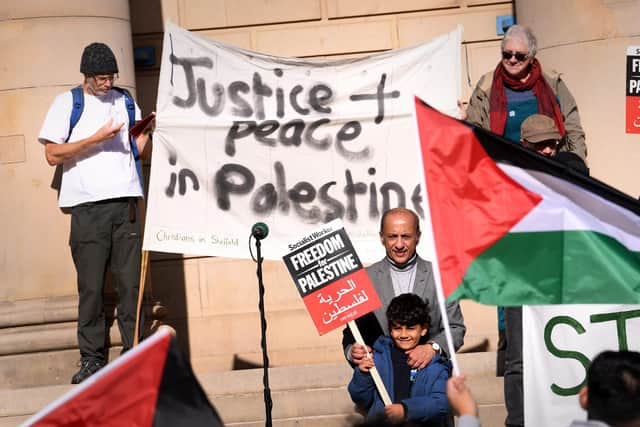Policing protests isn’t an exact science it requires intelligence and experience - Dr Alan Billings
Something similar can be said when things happen on the Arab street in the Middle East. If there are protests in Ramallah or East Jerusalem, it will have consequences for us as well: there will be matching pro-Palestinian demonstrations here. This is because there are those in this country who are Palestinian or of Palestinian heritage, or who have sympathy with their cause.
I spent some time recently seeing how South Yorkshire police prepared for local demonstrations and protests, something the public might never think about. The assumption most people make is probably that there will always be a roomful of police officers somewhere who can simply be called upon if there is a protest and who will know exactly what they have to do. The idea would be that all protests are much of a muchness and the police would not have to think about varying their tactics or approach: they just do what they have done before.
Advertisement
Hide AdAdvertisement
Hide AdThis is far from the reality. The police first need good intelligence. If the organisers of a protest have not already made contact, the police will need to know – from social media or local police – where and when a protest is planned. If a march is proposed, the police will want to agree a route – for the safety of both protestors and the public. Some protests and demonstrations will have their own stewards and are well managed; some not. Public safety is always paramount.


Then there are judgements to be made about the number of officers needed, where they should be positioned and how many are held in reserve – in case. This in part depends on the best estimate for the number turning out for the demonstration and how peaceful they are likely to remain. All these decisions require officers with some experience.
I looked at the briefing which officers were given for the recent pro-Palestinian protests. It ran to several pages. It set out the law: protests are lawful but there may be public order offences or others – hate crimes, for example – that break the law and officers need to be clear about this. If an arrest is to be made the arresting officer needs clarity as to which law he or she is relying on.
The briefing also explained in some detail what the issues are that have led to the protest and where particular sensitivities were likely to be.
Advertisement
Hide AdAdvertisement
Hide AdIt gave illustrations of various flags and symbols so that the Palestinian flag could be distinguished from those of proscribed terrorist organisations such as Hamas or Hezbollah.
It is unlawful to display the flags and symbols of proscribed organisations and unlawful to promote their causes with slogans or chants; and the police should enforce the law.
Policing a protest is never going to be an exact science. This is why we need senior officers who have a sound grasp of the law relating to public order and to protests and also some experience of policing demonstrations of all kinds. My task is to ensure, on behalf of the public, that lawful protest can take place, public safety is assured and the law is upheld.
A shortened version of the Police and Crime Commissioner for South Yorkshire’s latest blog post.